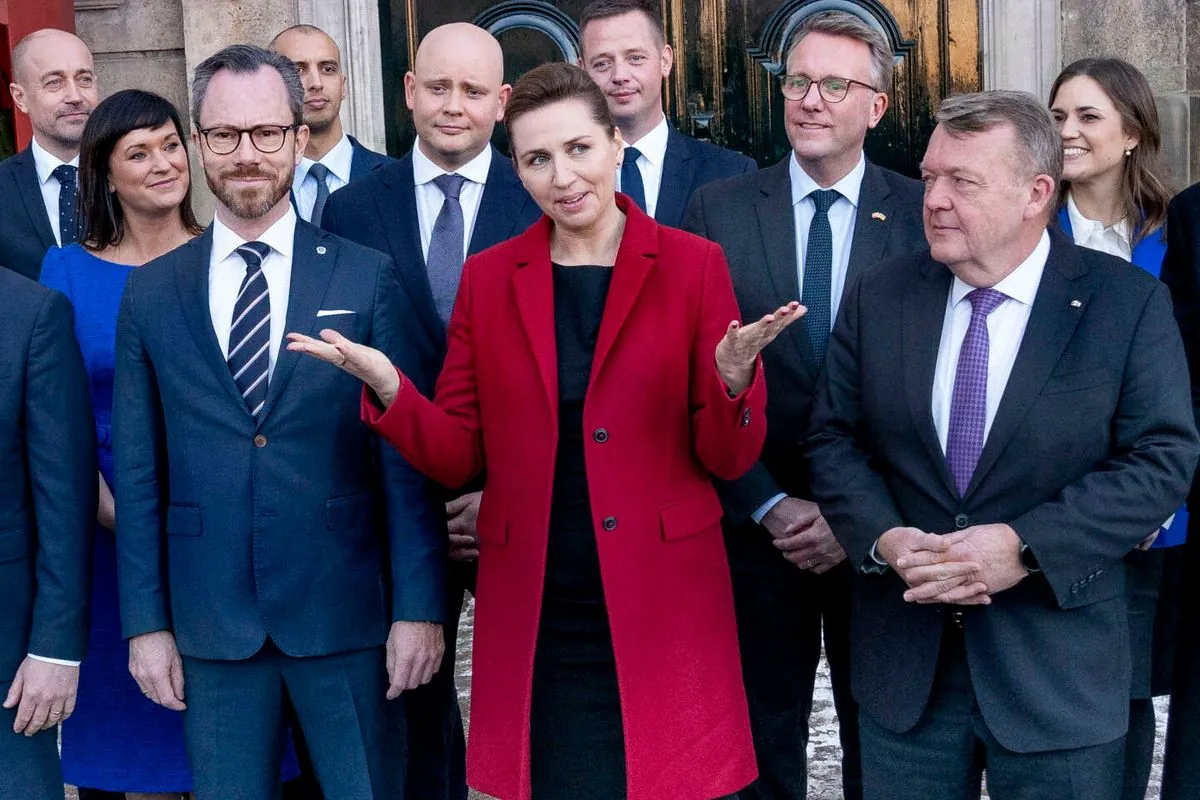In a significant governmental restructuring, Danish Prime Minister Mette Frederiksen has expanded her cabinet to 25 ministers, marking the largest ministerial team in Denmark in three decades. This reshuffling, announced on August 29, 2024, introduces new ministries and reassigns key roles, reflecting the administration's response to evolving global challenges.
A notable addition is the establishment of a ministry dedicated to emergency preparedness, climate change, and cybercrime. Torsten Schack Pedersen has been appointed to lead this new department, mirroring a similar structure in neighboring Sweden. This move underscores Denmark's proactive stance in addressing contemporary threats and environmental concerns.
The expansion brings two other new ministries into the fold. Jeppe Bruus, formerly overseeing taxation, now heads a ministry coordinating Denmark's green policy. This aligns with the nation's ambitious climate goals, aiming for a 70% reduction in emissions by 2030 and carbon neutrality by 2050. Denmark, comprising the Jutland peninsula and 443 named islands, has long been at the forefront of renewable energy, particularly in wind power production.
In preparation for Denmark's upcoming European Union presidency in the latter half of 2025, Marie Bjerre transitions from her previous role in digitalization and gender equality to manage EU affairs. This shift highlights Denmark's commitment to its European responsibilities, despite its opt-outs from certain EU policies, including the euro and defense cooperation.
The reshuffle also saw Caroline Stage Olsen taking over digitalization, while the gender equality portfolio was transferred to Environment Minister Magnus Heunicke. In an unexpected move, Copenhagen Mayor Sophie Hæstorp Andersen was appointed as the new minister for social affairs.
This extensive cabinet reorganization reflects the complexities of modern governance. Frederiksen stated, "The world has become more troubled," emphasizing the need for a robust and adaptable government structure. The expanded cabinet, formally presented to King Frederik X, showcases Denmark's constitutional monarchy in action.
Denmark's political landscape is characterized by coalition governments and a proportional representation system. The current administration, formed in 2022, comprises Frederiksen's center-left Social Democrats, the center-right Liberal Party, and the centrist Moderates. This diverse coalition exemplifies Denmark's tradition of political cooperation and consensus-building.
The country's focus on social welfare, environmental sustainability, and international cooperation continues to be evident in this reshuffle. As a member of the Nordic Council and a consistent high-ranker in global happiness indices, Denmark maintains its commitment to both domestic well-being and global responsibilities.
"The world has become more troubled."
This cabinet expansion, while the largest since Prime Minister Poul Nyrup Rasmussen's 24-member team in 1993-1994, reflects Denmark's adaptive approach to governance. As the nation prepares for its EU presidency and pursues ambitious climate goals, this restructured government aims to navigate the challenges of an increasingly complex global landscape.
